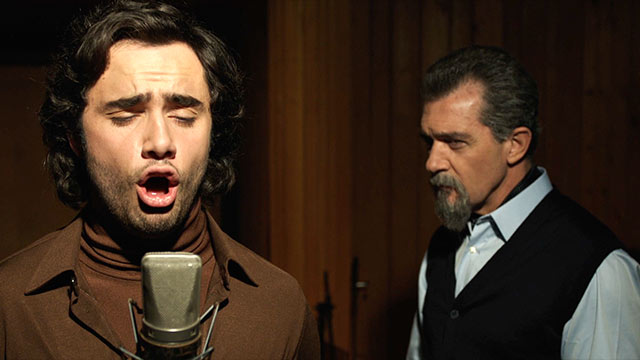Student Exhibition Showcases Fleeting Moments of Exchange

Hana Kheiashy has always found inspiration for her photography among the residents, workers and passers-by in downtown Cairo, the old district of Sayeda El Zeinab and the ancient souks of Khan El Khalili.
Referring to these Cairo districts as Egypt’s “dusty diamonds”, Kheiashy, a Communication and Media Arts senior, believes much of what makes the country beautiful goes unnoticed.
Through her camera lens and the approach known as street photography, she has tried to capture what she says is the “real Cairo”.
“This is the Egypt I know, beautiful architecture, downtown Cairo, kind people,” Kheiashy says.
When Kheiashy first started taking a camera with her on visits to the heart of Cairo, she became intrigued by some of the subjects she depicted in her photographs.
She began talking to the people there and getting to know more about their lives.
“I found beauty in them, and genuine kindness, a type I have not found at AUC,” she said.
Kheiashy’s photos are currently part of the Windows and Mirrors student exhibition on display at the Sharjah Art Gallery and at the Journalism and Mass Communication Department.
The title of the exhibition, which is a collaboration of work produced by Art Department and Journalism and Mass Communication students, alludes to a 1978 Museum of Modern Art gallery in New York City.
Ronnie Close, co-curator of the Sharjah Gallery event and a professor of photography, said that the original essay for the 1978 show was “a thought provoking vision on the process of photography”, adding that the curators thought that it would “provide a prism to think or rethink the medium.”
All of the photos in the student productions at the Sharjah Gallery were seen as having a unified theme – they all represented subjects that could be linked back to the students’ expressions of themselves.
Kaya Behkalam, an Art professor and one of the event organizers, said the projects revealed “how students use the camera to look at themselves and the world.”
Some of the photographs captured the vulnerability of skin, others of family, random faces in the street, or “intriguing” parts of Egypt.
Kheiashy’s photos fell under the latter category and conveyed her relationship with the people she shot through her camera.
“The photos refer to fleeting moments of exchange and sometimes worked as a single image; other times not,” Close said.
Art Professor Heba Farid, the other co-curator, meanwhile, found that a platform of debate had been created by having students from two different departments work on the same project.
“The [JRMC students] sought to create iconic images, ones that spread and made an impact; the Arts students, however, had more narrative and open-ended images,” said Farid.
Windows and Mirrors will be on display until March 13.
A discussion about the student projects will be held on March 10.


